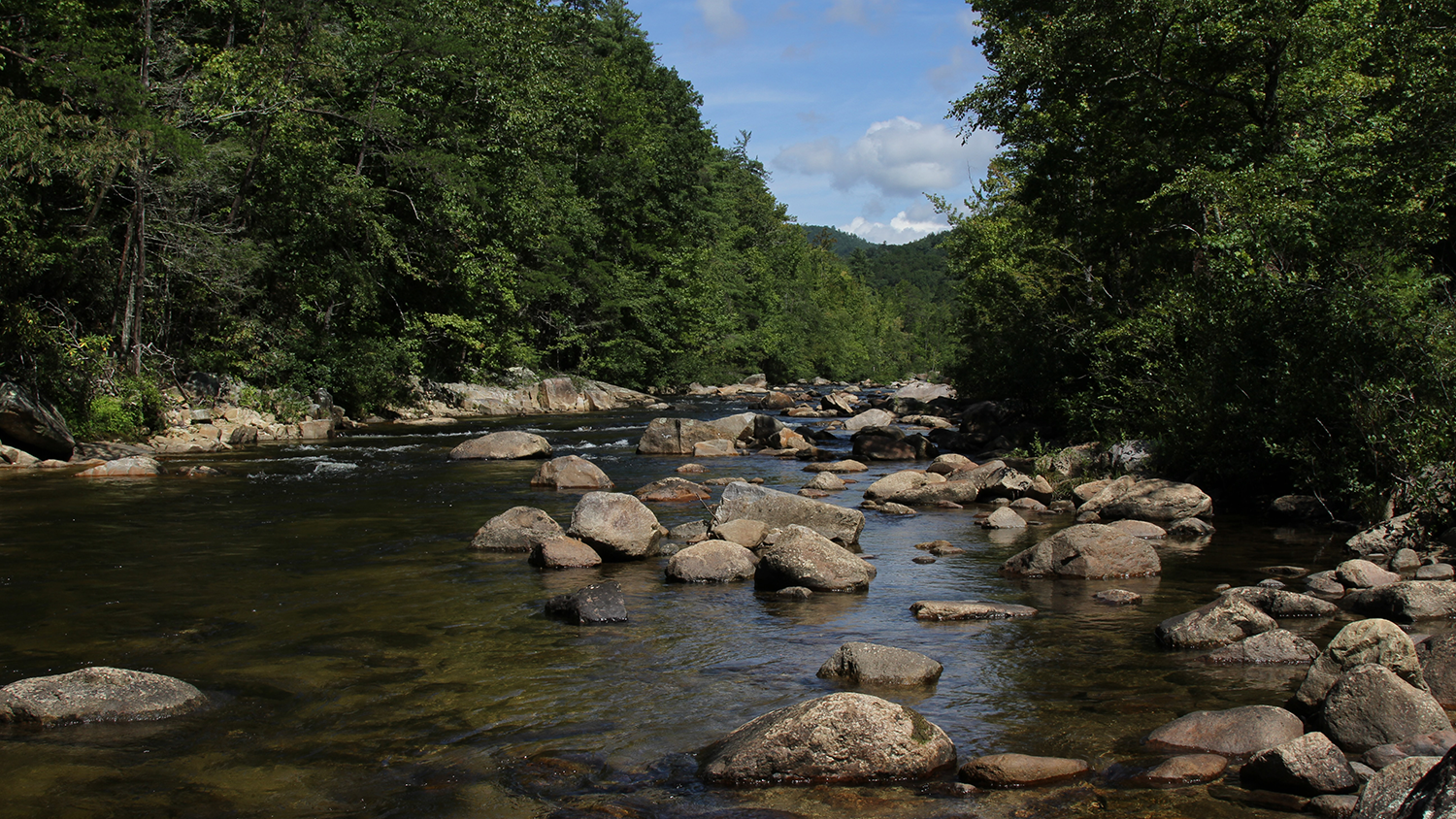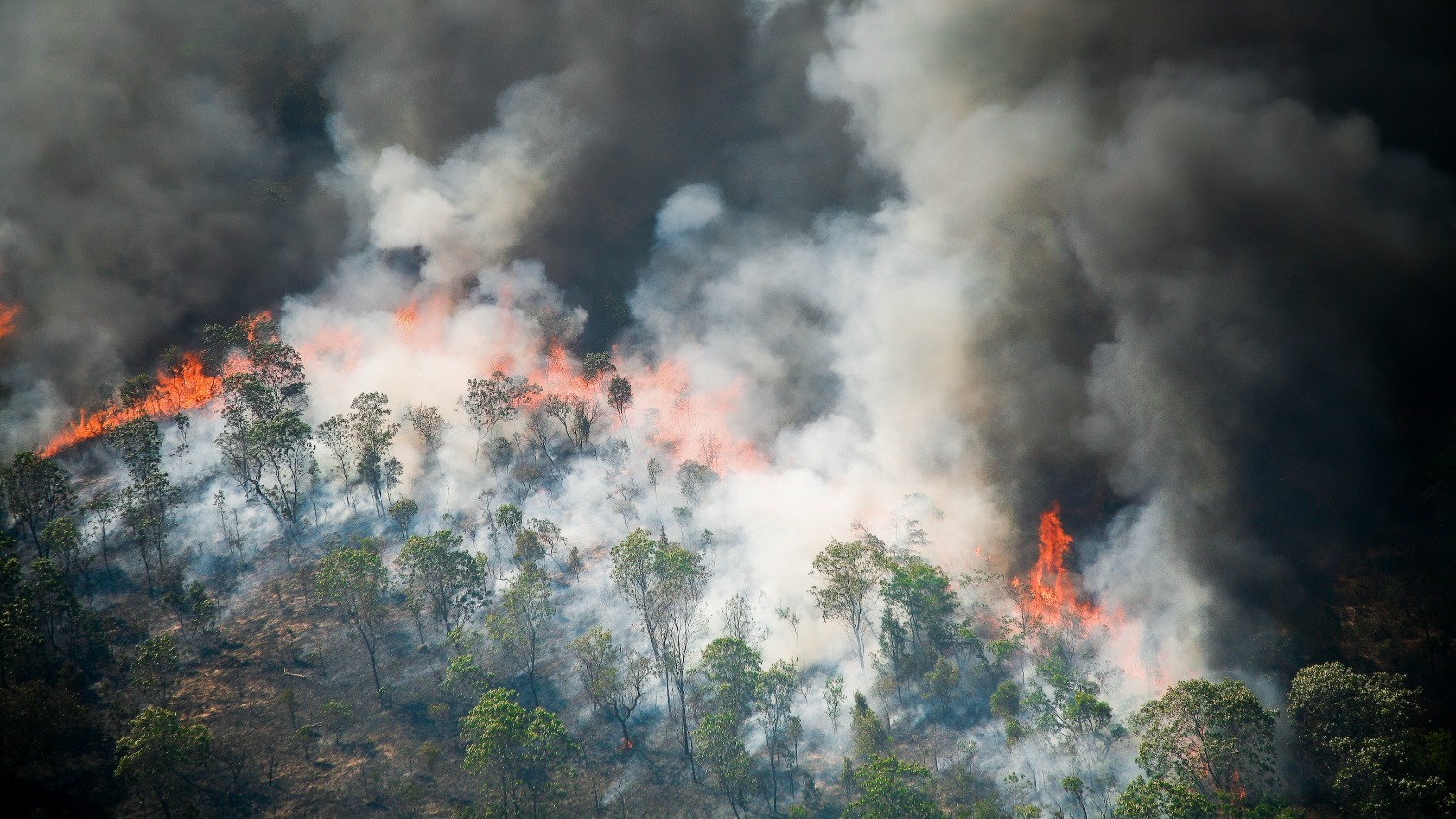What is a Watershed?

Watersheds are critical to our social, environmental and economic well-being, according to Katherine Martin, an assistant professor in the Department of Forestry and Environmental Resources at the NC State College of Natural Resources.
Martin leads the watershed ecology research group in collaboration with the Center for Geospatial Analytics and the Southeast Climate Adaptation Science Center. Her research focuses on how climate and land use change affect landscape ecosystem services, including clean water, carbon sequestration and wildlife habitat.
We recently asked Martin to help us answer some of the most common questions about watersheds. Check out the list below to learn more.
- What is a watershed?
- How big is a watershed?
- Who lives in a watershed?
- Why are watersheds important?
- What are the primary threats to watersheds?
- How does pollution impact watersheds?
- Will climate change affect watersheds?
- How can watersheds be protected?
What is a watershed?
A watershed is an area of land through which precipitation and all other surface runoff flows downhill into a common body of water, whether it’s a stream, river, lake or ocean. Watersheds can include forests, agricultural lands, cities and various other types of land cover. One of the best ways to think of a watershed is to imagine it as a funnel. The hills, mountains and sloping topography of the watershed represent the walls of the funnel, while the streams and other bodies of water represent the spout. When a drop of water enters anywhere in the funnel, it slides down the walls and concentrates at the spout before flowing out at a single point.
How big is a watershed?
The size of a watershed can vary from less than an acre to thousands of square miles depending on a number of factors, including its connectivity. Many watersheds in the United States are nested, meaning that multiple smaller watersheds comprise a larger watershed. The Mississippi River watershed, for example, drains an area of about 1.2 million square miles from all or parts of 32 states and two Canadian provinces, accounting for about 40% of the continental U.S. as it extends from the Appalachians to the Rockies.
Who lives in a watershed?
Everyone lives in a watershed. You can think of a watershed as your environmental address. The U.S. Geological Survey numbers watersheds using a system of hydrological unit codes (HUCs) — a series of numbers that describe the geographical location and scale. HUCs begin with a two-digit grouping for the region and an additional two digits each for subregions, basins, subbasins, watersheds and subwatersheds. For example, the number 06010105 identifies the Upper French Broad, a subwatershed of western North Carolina. The first two digits indicate that it’s part of the Tennessee Region. You can click here to locate your watershed.
Why are watersheds important?
Healthy watersheds provide a wide range of critical ecosystem services. Some of these services include cleaning our drinking water, stabilizing soils, storing carbon, and providing wildlife movement corridors. The forests and water bodies within watersheds can also provide recreational opportunities, which not only improve mental and physical health but also generate billions of dollars in revenue for local and state governments. Also, because the vegetation within watersheds can slow the flow of stormwater runoff (water from rain and melting snow) and remove pollution as it flows across the ground, it can reduce the costs for drinking water treatment and even minimize property damage caused by flooding.
What are the primary threats to watersheds?
Urban development and agricultural operations pose serious threats to watershed health. When vegetation is replaced by impervious surfaces like roads and parking lots, for example, it can increase the frequency and volume of stormwater runoff so that it carries more pollutants such as sediments, bacteria and nutrients into waterways. And when agricultural operations discharge animal waste into open lagoons and apply fertilizer on fields, flooding can cause the lagoons to overflow and the fields to become oversaturated, sending large amounts of nutrients into waterways.
Industrial activities can also negatively impact watersheds. A study led by NC State researchers, for example, recently found that the Chemours facility in Fayetteville released a chemical, called GenX, in the lower Cape Fear River. GenX is one of the man-made chemical compounds known as per-and polyfluoroalkyl substances (PFAS), which are used in commercial products such as food packaging, nonstick coatings and firefighting foam. The release of these chemical can negatively impact drinking water quality and human health.
How does pollution impact watersheds?
Sediments and nutrients are some of the most common pollutants known to impact watersheds. When these pollutants enter waterways, they can cause a wide range of problems for the environment and economy. Sediment can cause water to become cloudy, making it difficult for fish to feed. It can also wear out the pumps and turbines of water treatment plants, leading to increased maintenance costs. Nutrients, on the other hand, can cause an excessive growth of algae, or an algal bloom. Algal blooms can not only reduce the oxygen content of water, suffocating fish and other aquatic organisms, but also produce toxins that can cause humans to develop skin rashes, liver and kidney damage, respiratory problems and neurological symptoms. They can also raise the cost of drinking water treatment. One utility in North Carolina’s Cape Fear River Basin spends between $800 and $1,300 per day to treat algal blooms.
Meanwhile, PFAS compounds such as GenX can infiltrate private drinking water wells. Depending on the level of exposure, these compounds can cause humans to experience serious health problems including thyroid and liver disorders, reproductive and fetal development problems, high cholesterol, a suppressed immune system, and kidney and testicular cancers. A team of NC State researchers plans to follow residents of the Cape Fear River Basin for up to 20 years to identify how exposure to GenX and 43 other PFAS compounds can result in changes in health. The team previously sampled the blood and urine of more than 1,000 residents from Wilmington, Pittsboro and Fayetteville, finding elevated levels of six different PFAS compounds.
Will climate change affect watersheds?
Climate change could have significant impacts on watershed health. In North Carolina and other states across the southeastern U.S., it’s expected to increase the number of storms passing near or over the region. This could result in more rain, increasing the potential for stormwater runoff to carry pollutants into waterways. Across the western U.S., climate change is already creating conditions for larger and more intense wildfires. Research shows that the loss of vegetation caused by these fires leaves soils exposed and easily erodible by rain.
How can watersheds be protected?
Many environmental organizations and government agencies are working to protect watersheds. In North Carolina, the Department of Environmental Quality operates a Riparian Buffer Protection Program. These buffers, or forested areas, are commonly established and maintained near water bodies across the state to serve as natural filters against pollution, with the vegetation trapping sediment as stormwater flows across the ground. The Environmental Protection Agency is also currently considering the addition of PFAS compounds to the Safe Drinking Water Act, the primary piece of federal regulation for treated drinking water quality. At home, you can directly contribute to healthy watersheds by properly disposing of your medications and household chemicals, picking up your pet’s waste, planting trees and volunteering to clean up local waterways. You can also help protect watersheds by taking steps to reduce your carbon footprint. That includes recycling and turning off the lights when you leave the room.


